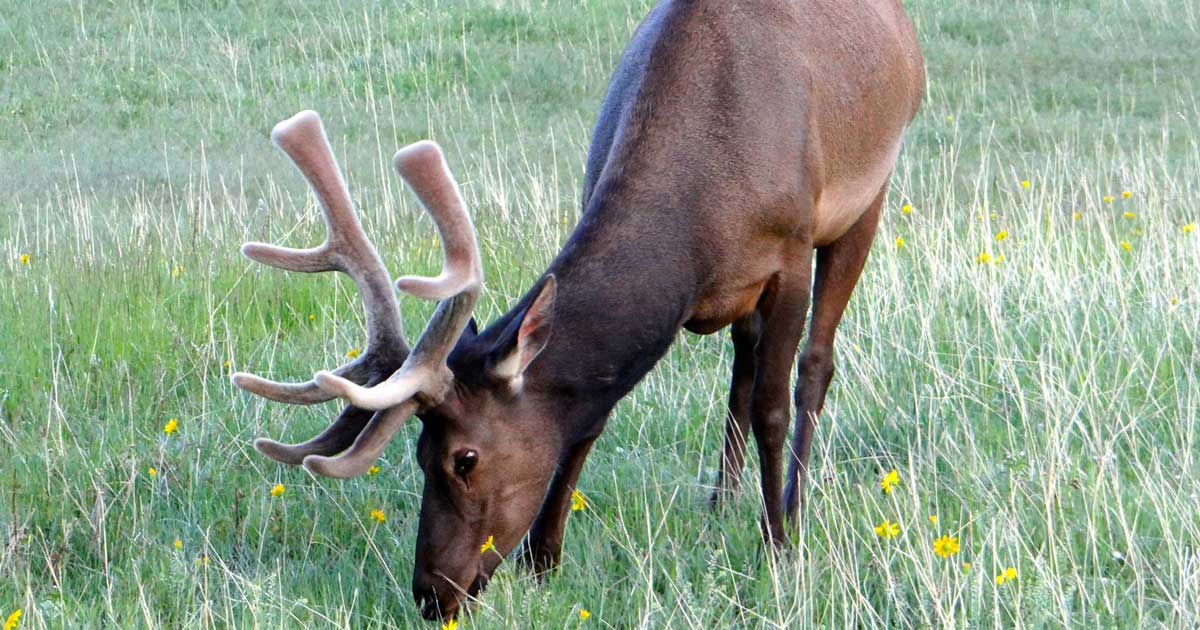When elk eat, they eat with a vengeance, packing in 15 pounds per day on average. Elk graze on grass, sedges and forbs in spring and summer. In the fall and winter, they will hit shrubs, tree bark, needles, and if they can get it, winter wheat. Elk typically eat under the cover of darkness, gorging themselves until the sky lightens with dawn. Then, they move to security cover, where they lounge and regurgitate little-by-little all the food they ate the night before, rechewing this “cud” into smaller pieces.
Like a chipmunk’s cheek full of nuts, the first chamber of an elk’s stomach, called the rumen, holds all the undigested vegetation. They chew it up again and again until it is small enough to move to the reticulum, the second stomach chamber. It then moves to a smaller chamber, the omasum and eventually food passes on to their real stomach, the abomasum. From there it travels to the small intestine, which then deposits it onto the ground. Some foods take longer to digest than others. Lupine, for instance, takes eight hours to digest, while huckleberry stems can take up to 20 hours before they hit the ground.
(Photo Scott Mutchler)
